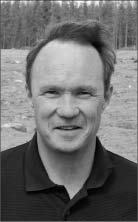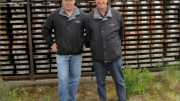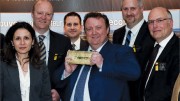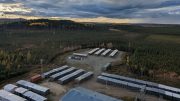Investors in Agnico-Eagle Mines (AEM-T, AEM-N) have two things on their minds these days, said the company’s president and CEO Sean Boyd at the Denver Gold Forum in September.
First, they want to know what Agnico is going to do with all the money flowing into its coffers as a result of the rising gold price. And second, they want to know when the prices of gold equities – which have not increased to reflect US$1,700-1,800 an oz. gold – are going to catch up.
“The answer to the first question is really going to provide the answer to the second question,” Boyd says.
Agnico provided a partial answer to that first question with its $275-million bid for Mexico-focused junior Grayd Resource (GYD-V), which was announced during the show.
The Grayd takeover will add 540 sq. km and two projects to Agnico’s landholdings in Mexico, including the La India project 70 km northwest of Agnico’s Pinos Altos mine – one of the company’s best performing assets. La India hosts 760,000 measured and indicated oz. gold at a grade of 0.88 gram gold per tonne, and more than 500,000 inferred oz. at 0.8 gram gold. A preliminary economic assessment in December indicates a nine-year mine life and healthy 51% internal rate of return at US$950 per oz. gold.
The tuck-in acquisition is early stage, but as per Agnico’s decades-old strategy, it has near-term production potential within three years, a positive existing economic study and Agnico will own 100% of it.
Once in production, Agnico plans to expand the deposit with cheap exploration ounces.
The gold miner’s acquisitions over the past five years have added ounces at a cost of US$100 an oz., but Agnico has added reserves at its projects through exploration at an average cost of US$20 per oz.
Grayd shareholders can opt for either $2.80 in cash or 0.04039 of an Agnico share, plus $0.05. The stock portion of the deal will increase Agnico’s share count by a modest 1.3% – the least amount of equity Agnico has ever issued in a takeover. Agnico has the cash to avoid issuing equity to close the deal. At the end of the second quarter it had $139 million, and under the agreement with Grayd, it won’t pay out more than $92 million in cash. But Boyd says that Grayd and other juniors believe in the gold price and don’t want all cash.
The miner with a 54-year history has 170 million shares outstanding and focuses on early-stage acquisitions that offer large packages and lots of exploration upside.
While Agnico has always been careful with issuing paper and spending money, Boyd says he’s starting to see more discipline in the gold sector as a whole in response to shareholders’ concerns.
“I think this goes back historically to an industry that has had a less-than-stellar track record on allocating capital, and that’s the fear going forward,” he says.
“Looking back over the last twenty years, I think we had an industry that had really no confidence in the product with the massive hedging. And the boards of directors clearly had no confidence in the businesses, because they were selling away the upside of gold.”
Agnico has never hedged its production.
Times have changed, and in a bullish environment for gold, no one’s asking anymore where the price of gold is going, Boyd says.
And with gold miners’ increasing focus on cash flow and yield, led by Newmont Mining‘s (NMC-T, NEM-N) recently enhanced gold-linked dividend policy, Boyd predicts companies will demonstrate going forward that gold mining is a solid business that can sustain a higher yield.
“That’s going to send a strong message that, in the context around the world of a lot of industries struggling, this is one industry that’s actually doing an effective job in a tough environment,” Boyd adds, referring to
escalating costs.
Agnico is tackling throughput issues that pushed cash operating costs to US$910 an oz. at its Meadowbank mine in Nunavut during the second quarter, which was the mine’s first full quarter of production, and US$850 per oz. at its
Kittila mine in Finland, where it is continuing exploration and will be expanding.
Weighted average production costs around its six operations came to US$565 per oz. for the quarter.
As to whether dividends – one of the key themes of this year’s Denver Gold Forum – are sustainable, Agnico’s history shows that they can be. The company started paying dividends 29 years ago, after gold’s price spike in 1980, and has continued to pay, even when its margins sank to US$75 an oz. Margins at today’s prices are upwards of US$1,000 an oz.
The yield on Agnico’s shares peaked in 1989 at 2.5%.
With more people looking at the gold industry from the perspective of cash flow, gold miners will have a better chance to compete with gold exchange-traded funds (ETFs) if they embrace that perspective as well.
“If you can’t actually increase your shareholders’ leverage to gold, then you’re not going to do well relative to the ETF,” he says. “So we’ve been very focused over a number of years on our ability to increase our leverage to not only production and reserves, but ultimately what drives cash flow per share.”






Be the first to comment on "Agnico’s Boyd has the answers"